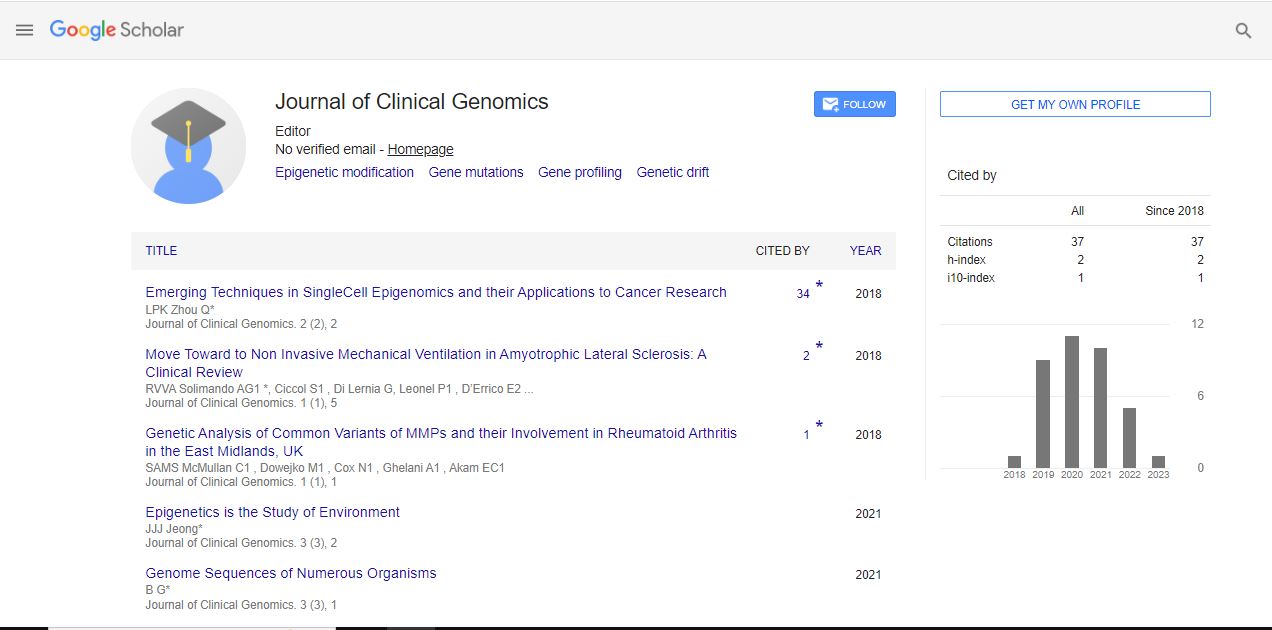Commentary, J Chromatography Res Vol: 6 Issue: 4
Ensuring Efficiency and Accuracy: SOPs for High-Performance Liquid Chromatography
Niroja Kumar*
1Department of Pharmaceutical Analysis, Manipal College of Pharmaceutical Sciences, Udupi, India
*Corresponding Author: Niroja Kumar,
Department of Pharmaceutical
Analysis, Manipal College of Pharmaceutical Sciences, Udupi, India
E-mail: Niroaj_kumar4657@gmail.com
Received date: 27 November, 2023, Manuscript No. JCGR-24-123804;
Editor assigned date: 29 November, 2023, Pre QC No. JCGR-24-123804 (PQ);
Reviewed date: 14 December, 2023, QC No. JCGR-24-123804;
Revised date: 21 December, 2023, Manuscript No. JCGR-24-123804 (R);
Published date: 28 December, 2023, DOI: 10.36648/JCGR.1000076.
Citation: Kumar N (2023) Ensuring Efficiency and Accuracy: SOPs for High-Performance Liquid Chromatography. J Chromatography Res 6:4.
Description
High-Performance Liquid Chromatography (HPLC) is a powerful analytical technique widely used for the separation, identification, and quantification of chemical compounds in diverse fields such as pharmaceuticals, environmental science, food analysis, and more. An effective Standard Operating Procedure (SOP) for HPLC is essential to ensure reproducibility, accuracy, and reliability of analytical results. This comprehensive guide outlines the key components and steps involved in developing an SOP for HPLC.
The SOP should begin with a clear statement of its purpose and scope. This section defines the objectives of HPLC analysis in the specific laboratory context. It outlines the types of samples to be analyzed, the range of compounds, and the acceptable limits or specifications. Define the responsibilities of personnel involved in HPLC analysis. This includes the roles of analysts, supervisors, and laboratory managers. Clearly outline who is responsible for sample preparation, instrument calibration, data analysis, and result interpretation. This section ensures accountability and helps maintain a well-organized workflow.
Safety is paramount in any laboratory setting. The SOP should detail safety precautions relevant to HPLC, including the handling of chemicals, disposal of waste, and emergency procedures. Information on the proper use of Personal Protective Equipment (PPE) and handling of hazardous materials should be explicitly outlined to ensure the well-being of laboratory personnel. Specify the HPLC equipment used in the laboratory, including the make and model of the instrument, chromatographic columns, detectors, and other accessories. Clearly state the calibration and maintenance schedule for each component. This section ensures that the equipment is in optimal condition for accurate and reliable analyses.
Describe the procedures for sample handling, including sample identification, storage, and preparation. Detail the methods for extracting, diluting, or derivatizing samples if necessary. Ensure that sample preparation is reproducible and minimizes any potential sources of error. Clearly specify any special requirements for specific sample types. Provide a detailed description of the chromatographic conditions to be used, including mobile phase composition, flow rate, column temperature, and injection volume. Specify the gradient or isocratic elution method, and include any relevant details such as equilibration times. This section ensures consistency in the chromatographic conditions for accurate comparisons of results.
Outline the calibration procedures for the HPLC system, detectors, and other relevant equipment. Define the calibration standards, their preparation, and the acceptance criteria. Include details on the frequency of calibration checks and the actions to be taken in the event of calibration failures. Calibration is critical for maintaining the accuracy of the instrument. Detail the system suitability tests that must be performed before sample analysis. Specify the acceptance criteria for parameters such as resolution, retention time, and peak symmetry. System suitability tests ensure that the HPLC system is operating within predefined performance limits, guaranteeing the reliability of results.
Provide a step-by-step guide for the actual HPLC analysis, including the injection of samples, chromatographic separation, and data acquisition. Include details on any variations in procedures for different types of samples or analyses. This section ensures a standardized approach to HPLC analysis. Describe the procedures for data analysis, integration of peaks, and calculation of results. Specify the software tools used for data analysis and the parameters for quantification. Clearly state the criteria for identifying and reporting outliers or irregularities in the data. Detail the requirements for result reporting, including the format of reports, units of measurement, and any reference standards used. Specify the information to be included in the final analytical report and the retention period for raw data and chromatograms. Proper documentation is crucial for traceability and audit purposes.
Define the quality control measures to be implemented, including the use of control charts, internal standards, and duplicate analyses. Specify the acceptance criteria for quality control samples and the actions to be taken in the event of deviations. This section ensures the ongoing reliability of analytical results. Provide a troubleshooting guide for common issues encountered during HPLC analysis. Include potential causes and solutions for problems such as baseline drift, poor peak shape, or detector issues. This section equips laboratory personnel with the tools to address issues promptly, minimizing downtime. Outline the training requirements for personnel involved in HPLC analysis. Specify the qualifications and experience necessary for individuals performing specific tasks. Detail the training program and ongoing competency assessments to ensure a skilled and knowledgeable workforce.
 Spanish
Spanish  Chinese
Chinese  Russian
Russian  German
German  French
French  Japanese
Japanese  Portuguese
Portuguese  Hindi
Hindi 